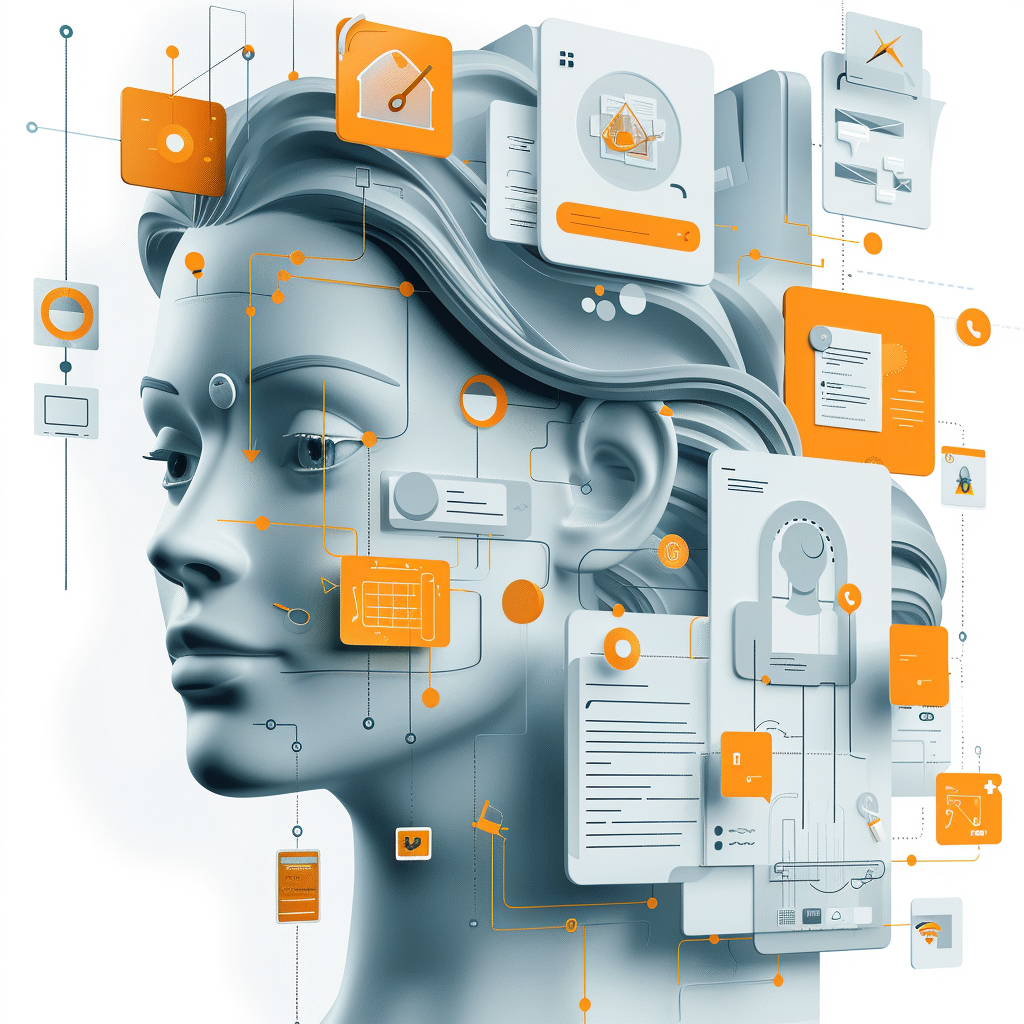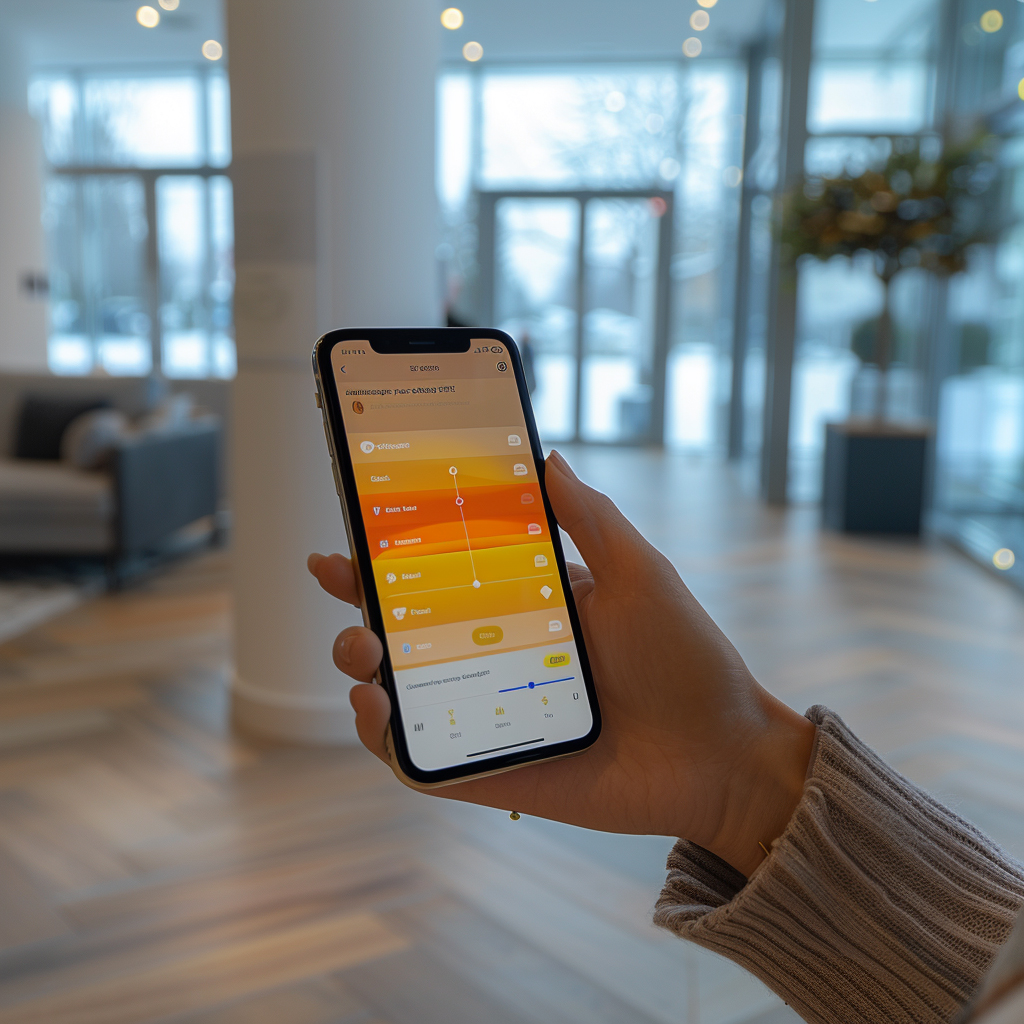1. Enhanced Language Understanding
Modern virtual assistants have dramatically improved in understanding natural language. Thanks to advanced NLP models and deep learning, they can comprehend complex queries, slang, and multiple languages with greater accuracy. This enhanced language understanding means users can speak more naturally and still be understood. Virtual assistants now handle nuanced requests and ambiguous phrasing more reliably, reducing the need for users to repeat or simplify their commands. Overall, better language comprehension makes interactions feel more human-like and boosts user satisfaction by providing more relevant and precise responses.

State-of-the-art language models have achieved near human-level comprehension on difficult tasks. For example, OpenAI’s GPT-4 was able to pass a simulated bar exam in the top 10% of test-takers, whereas its predecessor GPT-3.5 scored around the bottom 10%. This marked improvement in understanding and reasoning illustrates how far language processing has come in just a few years. Such advances enable virtual assistants to grasp complex instructions and context that earlier generations would have missed, closing the gap between machine understanding and human communication.
2. Contextual Awareness
Virtual assistants are becoming far more context-aware, meaning they remember and utilize prior interactions to inform current responses. This allows for multi-turn conversations where the assistant can follow up on previous questions or maintain context without needing the user to repeat information. Improvements like larger context windows and better dialogue management mean the assistant can handle longer discussions and still “remember” details from earlier. As a result, interactions are smoother and more coherent, with the assistant less likely to give irrelevant answers as conversations progress. This contextual continuity makes the experience more natural and efficient for users.

Technical advances now let AI assistants retain much more context from prior exchanges. Notably, OpenAI’s GPT-4 model can handle an extended context of up to 32,000 tokens (words) in a conversation, a huge leap from about 4,096 tokens in GPT-3. In practical terms, this means an AI assistant can recall and consider information from many pages of text or dozens of earlier messages when formulating a response. This expanded memory greatly improves the assistant’s ability to stay on topic over long dialogues and understand the context of follow-up questions, enhancing the fluidity of conversations.
3. Personalization
AI is enabling virtual assistants to deliver highly personalized experiences tailored to individual users. Modern assistants can learn a user’s preferences, habits, and history to customize responses – from recommending content and products to adjusting tone and interaction style. Personalization means the assistant remembers things like your schedule, favorite music, or frequent queries and uses that knowledge proactively. This leads to more relevant suggestions and a feeling that the assistant “knows” the user. By catering to personal needs and contexts, virtual assistants increase user engagement and satisfaction, as interactions become more convenient and user-centric over time.

Businesses have widely adopted AI for personalization to improve customer experiences. In fact, about 50% of companies report using AI to personalize interactions with their customers. This trend reflects the value companies see in tailoring services – AI-driven personalization has been linked to higher customer satisfaction and loyalty. For users, this means many virtual assistants (in e-commerce, media, etc.) are leveraging AI to remember individual preferences. For example, streaming services use AI to curate playlists for millions of users, and shopping assistants suggest products based on one’s unique browsing and purchase history. Such widespread use of AI for personalization underlines its importance in today’s virtual assistant technology.
4. Proactive Assistance
Beyond reacting to direct commands, AI-powered assistants are increasingly proactive – they anticipate user needs and offer help before being asked. This could mean reminding you of an upcoming meeting and suggesting departure times based on traffic, or automatically flagging important emails. By analyzing calendars, usage patterns, and context, a virtual assistant can take initiative, like suggesting a to-do list for the day or alerting you to a potential schedule conflict. Proactive assistance transforms the assistant from a passive tool into an active helper that can manage routine tasks and provide timely recommendations. This not only saves users time but also helps prevent issues (e.g. missed appointments) by acting in advance.

Early evidence shows that proactive AI assistants can significantly boost productivity. For example, in workplace settings, intelligent meeting assistants have been shown to save 10–18 minutes of follow-up work per meeting and even cut meeting durations by up to 40%. They achieve this by automatically handling tasks like transcribing minutes, scheduling next meetings, and summarizing action items without human prompting. These proactive features mean that employees spend less time on tedious after-meeting chores. In customer service, similarly, AI chatbots can initiate help – resolving common questions before a human agent is needed – which has been reported to increase efficiency and reduce wait times for clients.
5. Emotion Recognition
AI is giving virtual assistants the ability to recognize and respond to human emotions. Using techniques from affective computing, assistants can analyze voice tone, facial expressions (via camera), and word choice to infer the user’s emotional state – for instance, detecting if a user sounds frustrated, happy, or sad. This emotional awareness allows the assistant to adjust its responses appropriately, such as speaking more calmly if it senses anger or providing empathy if the user is upset. Emotion recognition makes interactions feel more empathetic and personalized. In customer support scenarios, for example, an AI assistant that recognizes frustration can seamlessly escalate to a human agent or offer soothing responses. Overall, this development aims to make virtual assistants not just smart, but emotionally intelligent companions.

The accuracy of AI in identifying human emotions has reached impressive levels. Recent reports show that advanced AI models can detect around 7 distinct human emotions from facial cues with roughly 96% accuracy. These systems analyze facial expressions (like smiles, frowns, furrowed brows) and vocal tone to determine feelings such as happiness, fear, anger, surprise, or sadness. An accuracy in the mid-90s percentile is approaching human-level ability in reading emotions. Such high precision means virtual assistants equipped with emotion recognition can reliably gauge a user’s mood in real time. This paves the way for more sensitive interactions – for example, a voice assistant might proactively offer help or apologize if it “senses” user frustration from their voice.
6. Multitasking Capabilities
AI improvements have endowed virtual assistants with strong multitasking capabilities – they can handle multiple tasks or inquiries at once and juggle different responsibilities seamlessly. Modern assistants are able to process several parallel requests, such as playing music while setting a timer and answering a question, without confusion. They can also manage multiple users speaking to them in turn, or multiple conversations, especially in text-based chat scenarios. These multitasking skills come from sophisticated underlying models that allocate attention to different tasks and from faster processing power. For users, this means interactions are more efficient: you can accomplish more with a single assistant in less time, as it no longer gets tripped up by receiving more than one instruction or dealing with several pieces of information simultaneously.

AI virtual assistants can now scale to handle a volume of interactions that would overwhelm any human. For instance, some AI customer service systems (voicebots and chatbots) are capable of handling thousands of queries concurrently without performance issues. In a call center context, this is analogous to one virtual agent doing the work of hundreds of human agents simultaneously – fielding countless customer questions at once and providing instant responses. This level of multitasking is possible because AI can rapidly switch contexts and process queries in parallel. The result is dramatically shorter wait times during peak service hours and the ability for a single assistant platform to serve a massive user base all at once. Such scalability showcases how AI multitasking extends far beyond human limits.
7. Seamless Device Integration
Virtual assistants are increasingly integrated across the ecosystem of smart devices, creating a seamless multi-device experience. AI improvements allow one assistant to function consistently on your phone, smart speaker, car, TV, and appliances, coordinating tasks between them. For example, you can ask your smartphone’s assistant to turn off the lights connected to your home hub, or your smart speaker to read a text message received on your phone. This deep integration is made possible by standardized AI platforms and IoT connectivity. It means the assistant can follow you from room to room or device to device – you might start a task with a voice command in your car and finish it on your home device. The benefit for users is a unified experience: no matter which gadget you speak to, the assistant has access to the same knowledge and can perform the same personalized functions, tying the whole smart environment together.

The growth of device integration is evident in the expanding compatibility of virtual assistants with other products. For example, Amazon’s Alexa platform now supports over 100,000 smart home devices, a 40% increase from about 60,000 devices in 2019. This means tens of thousands of different lights, thermostats, door locks, appliances and more can be controlled through Alexa’s AI assistant. Likewise, Google Assistant and Apple’s Siri have similarly broad (and growing) device ecosystems. The rapid rise from supporting a few hundred devices in the early days to five figures today shows how manufacturers are embracing voice assistant integration. For consumers, this translates to more things in their home and life that a virtual assistant can seamlessly operate or coordinate, from security systems to refrigerators, all through simple voice or app commands.
8. Improved Speech Recognition
Speech recognition – the ability of an assistant to accurately convert spoken words into text – has improved to the point of near parity with human listeners. Modern AI speech-to-text engines are far more accurate in noisy environments, across different accents, and with faster response times than those of a few years ago. These improvements stem from large deep learning models trained on enormous datasets of spoken language. For users, better speech recognition means you don’t have to overly articulate or repeat yourself; the assistant is likely to catch what you said the first time. It also enables the assistant to be used in more contexts (like while driving or cooking) since it can handle natural, rapid speech. Overall, the conversation with an assistant flows better when it reliably understands your voice input, which is foundational to a good user experience.

Thanks to AI advances, speech recognition accuracy has reached a very high level. Google’s speech recognition technology, for instance, achieved about 95% accuracy for English speech – a milestone it had already reached by 2017. (For comparison, human transcriptionists are generally around 95-99% accurate.) This improvement from roughly 75% accuracy a few years prior to ~95% means error rates were cut by more than half. In practical terms, today’s virtual assistants correctly decipher the vast majority of spoken words. Furthermore, specific tests have shown some assistants, under optimal conditions, even surpass 99% accuracy in understanding queries (e.g. on smart speakers with advanced microphones). Such progress in speech recognition greatly reduces miscommunication between users and their devices.
9. Enhanced Security and Privacy
As virtual assistants become more powerful, there is a strong focus on improving security and privacy to protect users. New updates have been encrypting data, requiring user authentication for sensitive actions, and processing more requests locally (on-device) rather than sending audio to cloud servers. These measures help ensure that private conversations aren’t intercepted or stored unnecessarily. Assistants are also better at recognizing authorized users’ voices (voice ID) so that, for example, only you can ask your smart speaker to check your calendar or make a purchase. Tech companies have responded to user concerns by introducing features like privacy modes, the ability to delete voice recordings, and transparency reports on data usage. The result is that using a virtual assistant today is generally safer and more privacy-respecting than in the past, making users more comfortable integrating these tools into daily life.

Despite improvements, privacy remains a key concern that drives ongoing enhancements. Surveys show that over 40% of people are concerned about their privacy when using digital voice assistants in their home. Users worry how their voice data is stored and used. In response, major providers have rolled out end-to-end encryption for assistant communications and on-device processing of audio (for instance, Apple’s iOS update that lets Siri handle many requests offline to avoid cloud exposure). Some assistants now even have a physical mute button or visual indicator to assure users the device isn’t listening. The substantial portion of concerned consumers has pushed the industry to continually harden security and privacy; for example, Amazon, Google, and Apple all publish privacy whitepapers for their assistant platforms and allow users to review and delete voice recordings, reflecting a direct effort to address these statistics.
10. Domain-Specific Expertise
AI-driven virtual assistants are now being tailored with domain-specific expertise for fields like healthcare, finance, education, and law. Instead of a one-size-fits-all model, these specialized assistants possess in-depth knowledge of a particular domain’s terminology, regulations, and typical user needs. For example, in healthcare a virtual assistant might be trained on medical FAQs and patient triage, enabling it to offer reliable preliminary medical advice or help schedule appointments and send medication reminders. In finance, an assistant can handle banking transactions, budget planning, or investment queries with appropriate accuracy and compliance. These domain-focused assistants improve efficiency by handling routine expert tasks (like answering common legal questions for a law firm’s clients). They also provide users with quick access to expert information. As AI models become more sophisticated, we’re seeing a trend of “vertical” assistants that excel in one domain, complementing the general-purpose assistants.

Adoption of domain-specific virtual assistants is growing as their value is proven. In financial services, for instance, customer acceptance of AI advisors is high – 89% of banking customers reported being satisfied with generative AI virtual assistants, and 53% trust these assistants to help with financial planning. This trust in a specialized financial assistant (as found in a 2023 industry survey) highlights that many users are comfortable getting tailored advice on complex topics like investments or loan choices from AI, when the assistant is properly trained in that domain. Similarly, in healthcare, while still emerging, about 19% of medical clinics were using AI chatbots for patient interaction by 2025, a number expected to rise as those assistants demonstrate safe and helpful medical guidance. These stats underline a growing confidence in domain-specific AI experts, which is driving broader implementation across industries.